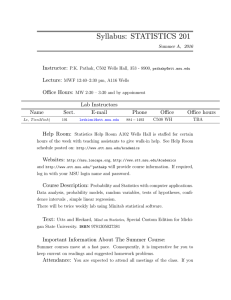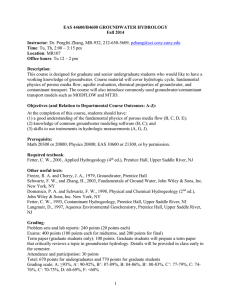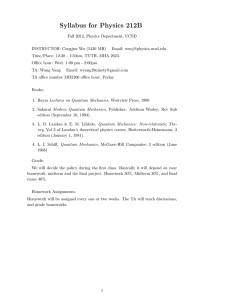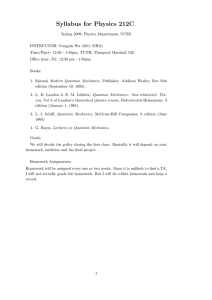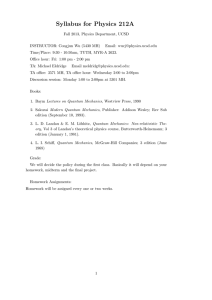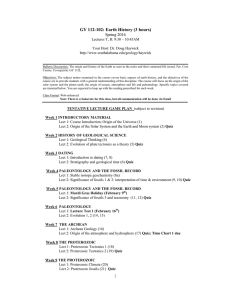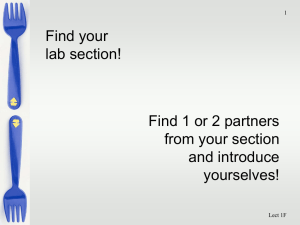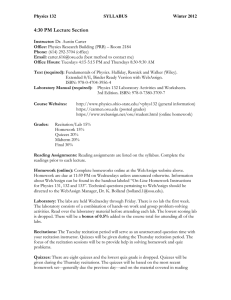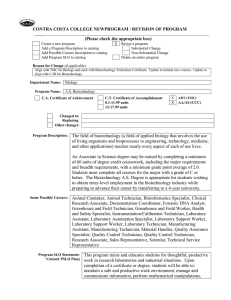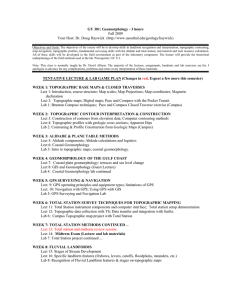Psychology 1230: Psychology of Adolescence
advertisement
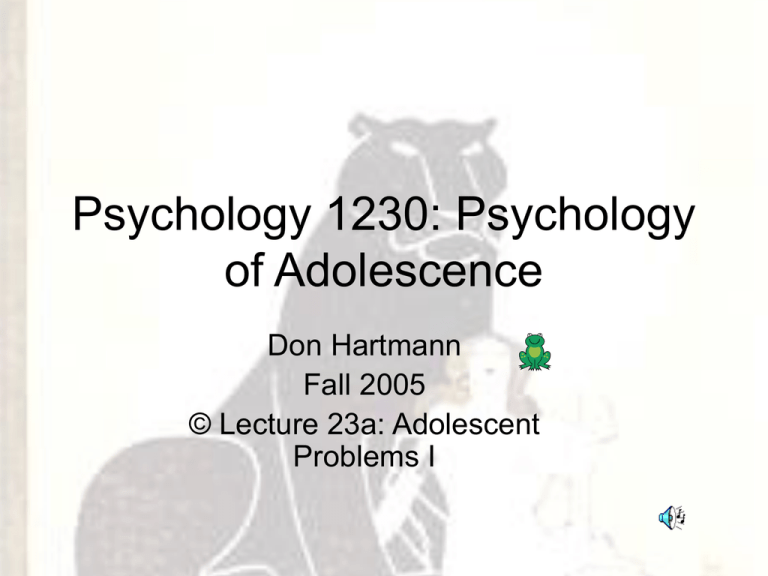
Psychology 1230: Psychology of Adolescence Don Hartmann Fall 2005 © Lecture 23a: Adolescent Problems I 1 Quiz 3 Information • Schedule: Quiz 3 is scheduled for Wednesday during class time. Please be prompt, as I will not allow extra time for stragglers • Content: (chapters 10-14, lectures #17-23b, handouts, etc. will contain the following: – 7-9 questions from each chapter, – 3-4 items from each lecture, and – 0-1 questions from each handout. • The items will total ≈43 in number. 2 Quiz 3 Information • A review session for Quiz 3 is scheduled for Rm. 604, BS at 10:3011:30 on Tuesday, December 3rd • Quiz 3 is scheduled for Wednesday during class time. Please be prompt, as I can not allow extra time for stragglers • Approximately 80% of the multiple choice items will come from the study guides. The MC portion of the quiz will contain 40-45 items (chapters 10-14, lectures #17-23, handouts, etc.) from the following sources: – 3-5 questions from each chapter, – 1-2 items from each lecture, and – 0-1 questions from each handout. • The essay portion will include 3-5 relatively brief essay questions taken from the study guides. You will have some choice over which questions you can choose to answer 3 WEB Discussion Process Group Whippets 4♀+1♂ JusticeLeague PithHelmets MAJACS Psyched #3 due 10/27 (10/26) 10/28 (10/28) 11/15** 11/09 (11/09) 10/25 (10/25) 12/12 #4 due 11/14** 11/18 (11/18) Disbanded 11/28 11/11 (11/11) #5 due Disbanded 12/12 12/07 ---------Note: Anyone can contribute to any WEB discussion; group members are responsible to summarizing the discussion. The last day to contribute to any discussion is 3 days before the due date. Dates in parenthesis indicate the date handed in. Bolded dates indicate that material handed in was incomplete; more is required. **Where is the summary?? 4 Handout Summary • • • • • • • • • • • • • • • Handout WEB Date Date 11/07 11/04 11/07 11/08 11/08 11/10 11/11 11/17 11/21 11/21 11/21 11/28 11/28 11/30 12/01 40. Lect. #17: Autonomy 41. Handout: Supplemental Project #2 42. Handout: Supplemental Project #3 43. Lect. #17b: Family Conflict 44. Study Guide #10 45. Lect. #18: Peers 46. Lect. #19: Peers II: Pop. & Friendship 47. Lect. #20: Bullying 48. Study Guide #11 (corrected) 49. Lect. #21: Schools 50. Study Guide #12 51. Lect. #22a: Achievement 52. Study Guide #13 53. Study Guide #14 54. Lect. #23a: Adolescent Problems I 5 6 Supplementary Reading Maston, A. S., & Coatsworth, J. D. (1998). The development of competence in favorable and unfavorable environments: Lessons from research on successful children. American Psychologist, 53, 205-220. Dryfoos, J. G. (1990). Adolescents at risk: Prevalence and prevention. New York: Oxford University Press. On eating disorders: (www.pbs.org/wgbh/nova/thin/) On Utah teen suicides: health.utah.gov/vipp/suicide/youthSuicide.html 7 Overview: Adolescent Problems I & II • Introduction • Risk, Resilience, and Pathways • Intervention: Treatment & Prevention – Illustration involving drugs – Illustration involving teen suicide • Overlaps with text, pp. 507-522, 530531, 536 • Quiz 3 on Wednesday, Quiz 4 next Tuesday. 8 Introduction to Problems: I • Perspective on Problems – Large problems often associated with multiple problems – Adolescent rates similar to older children and to young adults • Differ in unwanted pregnancies, involvement in drugs, auto theft, suicide 9 Introduction to Problems: II • Common Problems – Adolescents likely to be referred to mental health facilities because of problems related to depression and related to school difficulties – Lower SES adolescents have more problems than middle-class adolescent – Girls and middle-class adolescents were more likely to have internalizing problems (e.g., anxiety & eating disorders) – Boys and lower SES adolescents were more likely to be characterized by externalizing problems (e.g., fighting) 10 11 Risk, Resilience, and Pathways • Risk Factors: – If we identify an antecedent as A1 and a later outcome as O2, and A1 is correlated with O2, then A1 is a risk factor for O2 • Resilience Factors: – If not all of the people who have A1 (say those individuals who have A1 but have an IQ>125 don’t have a poor outcome, an IQ>125 is referred to as a resilience factor 12 Pathways • A Developmental Pathway is a way of getting from one status early in development to some other (perhaps pathological status) at a later time. Coercive family Coercive Family environment Interactions Deviant Deviant Peers Peers Adult Criminal Behavior Poor monitoring Monitoring Poor 13 More on Pathways • Typically there is more than one developmental pathway to an outcome Adult Criminal Behavior Nurturant Family Envir. Parents serve as criminal models 14 Treatment versus Prevention: I • Because of resource limitations, only few can be treated • Using limited resources: – Focusing on the problem person: triage • those that won't get better, even if treated, don't treat • those that will get better anyway (most drug explorers), don't treat • those who will only get better with treatment, treat! 15 16 Treatment versus Prevention: II Focusing on prevention: • Primary prevention: treating people at risk, but who do not yet have the disorder • Secondary prevention: treating people who have the disorder to cure the disorder • Tertiary prevention: keeping people who have the disease from getting worse 17 Risk versus Prevention • Risk studies are those that look at factors that are associated with engaging versus not engaging in the target behavior (e.g., drug taking). These are correlational studies. • Prevention studies aim to identify the aspects of primary prevention programs that reduce the incidence of the target behavior. These are experimental investigations 18 Summary: Adolescent Problems I • Risk, Resilience, and Pathways • Prevention vs. Treatment • Go in Peace 19




